5317-33-9
| 中文名 | 1-(3-羟丙基)-4-甲基哌嗪 |
|---|---|
| 英文名 | 1-(3-Hydroxypropyl)-4-methylpiperazine |
| 中文别名 | 1-(3羟丙基)-4-甲基哌嗪 |
| 英文别名 |
3-(4-Methyl-1-piperazinyl)-1-propanol
4-Methyl-1-piperazinepropanol 1-(3-HYDROXYPROPYL)-4-METHYLPIPERAZINE EINECS 226-177-6 1-Piperazinepropanol, 4-methyl- MFCD00009781 N-Methyl-N'-(3 hydroxylpropyl) piperazine 3-(4-Methylpiperazin-1-yl)propan-1-ol dihydrochloride 3-(4-methylpiperazin-1-yl)propan-1-ol |
| 密度 | 1.0±0.1 g/cm3 |
|---|---|
| 沸点 | 252.8±25.0 °C at 760 mmHg |
| 分子式 | C8H18N2O |
| 分子量 | 158.241 |
| 闪点 | 111.6±21.8 °C |
| 精确质量 | 158.141907 |
| PSA | 26.71000 |
| LogP | -1.47 |
| 蒸汽压 | 0.0±1.1 mmHg at 25°C |
| 折射率 | 1.484 |
| 储存条件 | 室温 |
| 计算化学 | 1.疏水参数计算参考值(XlogP):-0.3 2.氢键供体数量:1 3.氢键受体数量:3 4.可旋转化学键数量:3 5.互变异构体数量:无 6.拓扑分子极性表面积26.7 7.重原子数量:11 8.表面电荷:0 9.复杂度:100 10.同位素原子数量:0 11.确定原子立构中心数量:0 12.不确定原子立构中心数量:0 13.确定化学键立构中心数量:0 14.不确定化学键立构中心数量:0 15.共价键单元数量:1 |
Synonym:None known Section 2 - COMPOSITION, INFORMATION ON INGREDIENTS
Risk Phrases: 36/37/38 Section 3 - HAZARDS IDENTIFICATION EMERGENCY OVERVIEW
Irritating to eyes, respiratory system and skin.Corrosive. Potential Health Effects Eye: Causes eye burns. May cause chemical conjunctivitis and corneal damage. Skin: Causes skin burns. May cause skin rash (in milder cases), and cold and clammy skin with cyanosis or pale color. Ingestion: May cause severe and permanent damage to the digestive tract. Causes gastrointestinal tract burns. May cause perforation of the digestive tract. May cause systemic effects. Inhalation: Causes chemical burns to the respiratory tract. Aspiration may lead to pulmonary edema. May cause systemic effects. Can produce delayed pulmonary edema. Chronic: Effects may be delayed. Section 4 - FIRST AID MEASURES Eyes: Get medical aid immediately. Do NOT allow victim to rub eyes or keep eyes closed. Extensive irrigation with water is required (at least 30 minutes). Skin: Get medical aid immediately. Immediately flush skin with plenty of water for at least 15 minutes while removing contaminated clothing and shoes. Wash clothing before reuse. Destroy contaminated shoes. Ingestion: Never give anything by mouth to an unconscious person. Get medical aid immediately. Do NOT induce vomiting. If conscious and alert, rinse mouth and drink 2-4 cupfuls of milk or water. Inhalation: Get medical aid immediately. Remove from exposure and move to fresh air immediately. If not breathing, give artificial respiration. If breathing is difficult, give oxygen. Do NOT use mouth-to-mouth resuscitation. If breathing has ceased apply artificial respiration using oxygen and a suitable mechanical device such as a bag and a mask. Notes to Physician: Treat symptomatically and supportively. Section 5 - FIRE FIGHTING MEASURES General Information: As in any fire, wear a self-contained breathing apparatus in pressure-demand, MSHA/NIOSH (approved or equivalent), and full protective gear. During a fire, irritating and highly toxic gases may be generated by thermal decomposition or combustion. Use water spray to keep fire-exposed containers cool. Vapors may be heavier than air. They can spread along the ground and collect in low or confined areas. Contact with metals may evolve flammable hydrogen gas. Containers may explode when heated. Non-combustible, substance itself does not burn but may decompose upon heating to produce corrosive and/or toxic fumes. Extinguishing Media: Do NOT get water inside containers. For small fires, use dry chemical, carbon dioxide, or water spray. For large fires, use dry chemical, carbon dioxide, alcohol-resistant foam, or water spray. Cool containers with flooding quantities of water until well after fire is out. Section 6 - ACCIDENTAL RELEASE MEASURES General Information: Use proper personal protective equipment as indicated in Section 8. Spills/Leaks: Avoid runoff into storm sewers and ditches which lead to waterways. Clean up spills immediately, observing precautions in the Protective Equipment section. Avoid generating dusty conditions. Absorb spill using an absorbent, non-combustible material such as earth, sand, or vermiculite. Do not use combustible materials such as sawdust. Provide ventilation. Section 7 - HANDLING and STORAGE Handling: Wash thoroughly after handling. Use only in a well-ventilated area. Do not get in eyes, on skin, or on clothing. Keep container tightly closed. Avoid ingestion and inhalation. Wash clothing before reuse. Discard contaminated shoes. Storage: Store in a tightly closed container. Store in a cool, dry, well-ventilated area away from incompatible substances. Corrosives area. Section 8 - EXPOSURE CONTROLS, PERSONAL PROTECTION Engineering Controls: Facilities storing or utilizing this material should be equipped with an eyewash facility and a safety shower. Use adequate ventilation to keep airborne concentrations low. Exposure Limits CAS# 5317-33-9: Personal Protective Equipment Eyes: Wear appropriate protective eyeglasses or chemical safety goggles as described by OSHA's eye and face protection regulations in 29 CFR 1910.133 or European Standard EN166. Skin: Wear appropriate protective gloves to prevent skin exposure. Clothing: Wear appropriate protective clothing to prevent skin exposure. Respirators: A respiratory protection program that meets OSHA's 29 CFR 1910.134 and ANSI Z88.2 requirements or European Standard EN 149 must be followed whenever workplace conditions warrant respirator use. Section 9 - PHYSICAL AND CHEMICAL PROPERTIES Physical State: Liquid Color: colorless, oily Odor: none reported pH: Not available. Vapor Pressure: Not available. Viscosity: Not available. Boiling Point: 120-121C @ 9mm Hg Freezing/Melting Point: < 20 deg C Autoignition Temperature: Not applicable. Flash Point: > 109 deg C (> 228.20 deg F) Explosion Limits, lower: Not available. Explosion Limits, upper: Not available. Decomposition Temperature: Solubility in water: Specific Gravity/Density: Molecular Formula: C8H18N2O Molecular Weight: 158.1388 Section 10 - STABILITY AND REACTIVITY Chemical Stability: Stable at room temperature in closed containers under normal storage and handling conditions. Conditions to Avoid: Incompatible materials, excess heat. Incompatibilities with Other Materials: Strong oxidizing agents, strong acids, acid chlorides, acid anhydrides. Hazardous Decomposition Products: Carbon monoxide, oxides of nitrogen, irritating and toxic fumes and gases, carbon dioxide. Hazardous Polymerization: Has not been reported Section 11 - TOXICOLOGICAL INFORMATION RTECS#: CAS# 5317-33-9 unlisted. LD50/LC50: Not available. Carcinogenicity: 3-(N-Methylpiperazino)-Propanol - Not listed by ACGIH, IARC, or NTP. Section 12 - ECOLOGICAL INFORMATION Section 13 - DISPOSAL CONSIDERATIONS Products which are considered hazardous for supply are classified as Special Waste and the disposal of such chemicals is covered by regulations which may vary according to location. Contact a specialist disposal company or the local waste regulator for advice. Empty containers must be decontaminated before returning for recycling. Section 14 - TRANSPORT INFORMATION IATA No information available. IMO No information available. RID/ADR No information available. Section 15 - REGULATORY INFORMATION European/International Regulations European Labeling in Accordance with EC Directives Hazard Symbols: XI Risk Phrases: R 36/37/38 Irritating to eyes, respiratory system and skin. Safety Phrases: S 26 In case of contact with eyes, rinse immediately with plenty of water and seek medical advice. S 37/39 Wear suitable gloves and eye/face protection. WGK (Water Danger/Protection) CAS# 5317-33-9: No information available. Canada None of the chemicals in this product are listed on the DSL/NDSL list. CAS# 5317-33-9 is not listed on Canada's Ingredient Disclosure List. US FEDERAL TSCA CAS# 5317-33-9 is not listed on the TSCA inventory. It is for research and development use only. SECTION 16 - ADDITIONAL INFORMATION N/A |
| 符号 |

GHS07 |
|---|---|
| 信号词 | Warning |
| 危害声明 | H319 |
| 警示性声明 | P305 + P351 + P338 |
| 危害码 (欧洲) | Xi |
| 风险声明 (欧洲) | 36 |
| 安全声明 (欧洲) | 24/25 |
| 危险品运输编码 | NONH for all modes of transport |
| 海关编码 | 2933599090 |
|
~87% 
5317-33-9 |
| 文献:4SC AG Patent: US2006/142570 A1, 2006 ; Location in patent: Page/Page column 17 ; |
|
~56% 
5317-33-9 |
| 文献:Tasler, Stefan; Mueller, Oliver; Wieber, Tanja; Herz, Thomas; Pegoraro, Stefano; Saeb, Wael; Lang, Martin; Krauss, Rolf; Totzke, Frank; Zirrgiebel, Ute; Ehlert, Jan E.; Kubbutat, Michael H.G.; Schaechtele, Christoph Bioorganic and Medicinal Chemistry, 2009 , vol. 17, # 18 p. 6728 - 6737 |
|
~% 
5317-33-9 |
| 文献:Journal of the American Chemical Society, , vol. 81, p. 6511,6512 |
|
~% 
5317-33-9 |
| 文献:GB901187 , ; |
|
~% 
5317-33-9 |
| 文献:Monatshefte fuer Chemie, , vol. 87, p. 701,706 |
|
~% 
5317-33-9 |
| 文献:Monatshefte fuer Chemie, , vol. 87, p. 701,706 |
|
~% 
5317-33-9 |
| 文献:Bulletin de la Societe Chimique de France, , p. 576,578 |
|
~% 
5317-33-9 |
| 文献:GB807750 , ; |
|
~% 
5317-33-9 |
| 文献:Bulletin de la Societe Chimique de France, , vol. 2, # 11-12 p. 565 - 570 |
| 上游产品 10 | |
|---|---|
| 下游产品 3 | |
| 海关编码 | 2933599090 |
|---|---|
| 中文概述 | 2933599090. 其他结构上有嘧啶环的化合物(包括其他结构上有哌嗪环的化合物. 增值税率:17.0%. 退税率:13.0%. 监管条件:无. 最惠国关税:6.5%. 普通关税:20.0% |
| 申报要素 | 品名, 成分含量, 用途, 乌洛托品请注明外观, 6-己内酰胺请注明外观, 签约日期 |
| Summary | 2933599090. other compounds containing a pyrimidine ring (whether or not hydrogenated) or piperazine ring in the structure. VAT:17.0%. Tax rebate rate:13.0%. . MFN tariff:6.5%. General tariff:20.0% |


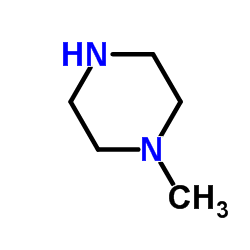





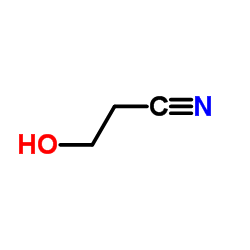
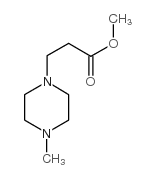
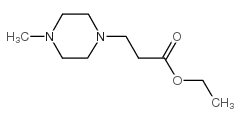
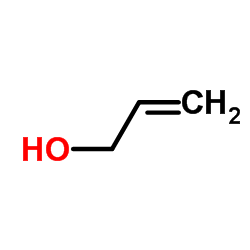



![4-chloro-7-methoxy-6-[3-(4-methylpiperazin-1-yl)propoxy]quinazoline结构式](https://image.chemsrc.com/caspic/358/894426-67-6.png)
![10H-Pyrido[3,2-b][1,4]benzothiazine-10-carboxylic acid 3-(4-methylpiperazino)propyl ester结构式](https://image.chemsrc.com/caspic/499/63885-82-5.png)